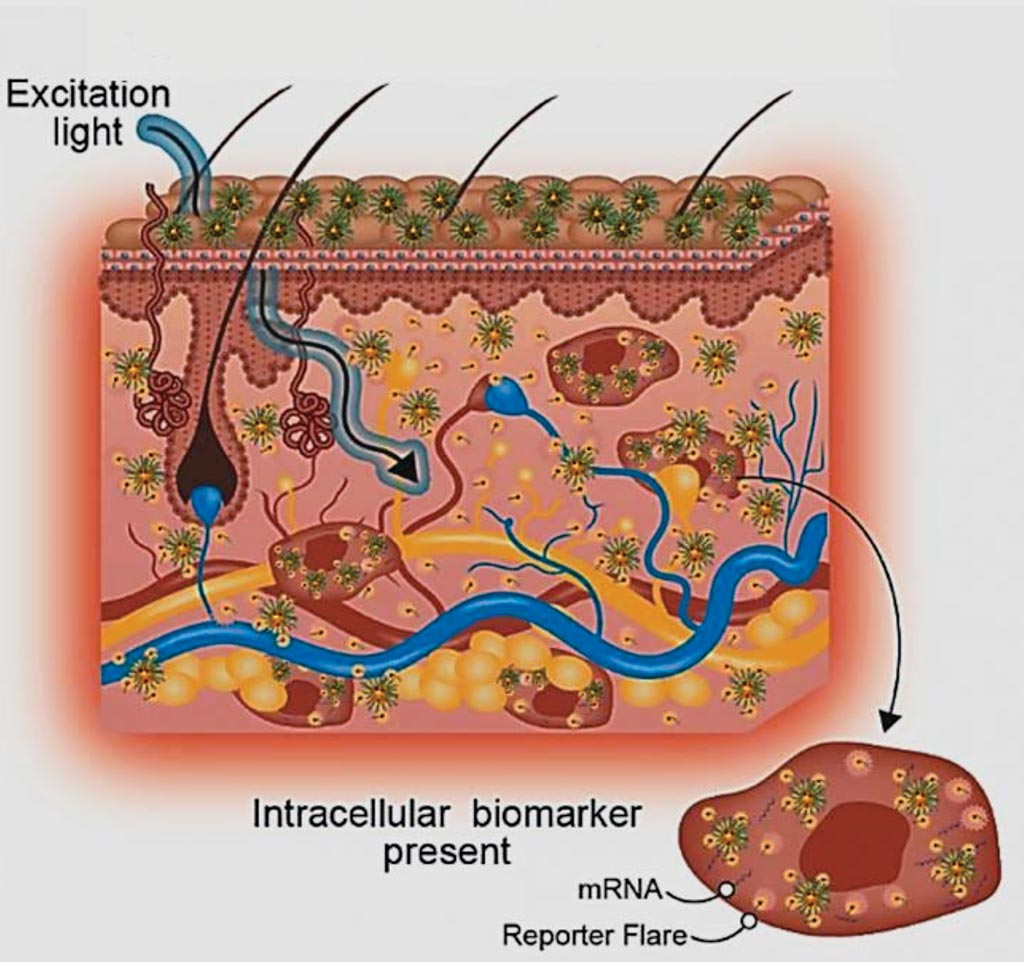Topical Nanotechnology Simplifies Skin Disease Diagnosis
By LabMedica International staff writers
Posted on 30 May 2018
Tissue biopsies are necessary for the accurate diagnosis of skin diseases, but their application is limited by the pain, inconvenience, and morbidity experienced by patients, as well as risks of scarring and infection.Posted on 30 May 2018
Many skin diseases, such as abnormal scars, are typically identified by visual identification of scar lesions; however, a visible scar is already mature, having generated significant newly formed tissue, and is unable to benefit from timely administration of prophylactics.

Image: A diagram of simplifying disease diagnosis using topically applied nanotechnology could change the way skin diseases such as abnormal scars are diagnosed and managed (Photo courtesy of Nanyang Technological University).
Scientists at the Nanyang Technological University (Singapore) used NanoFlare to enable biopsy-free disease diagnosis and progression monitoring in response to therapy. It is a minimally-invasive, self-applied alternative that can reduce scarring and infection risks; improve accessibility to disease diagnosis; provide timely feedback of treatment efficacy; and reduce healthcare personnel time and attention, hence the overall healthcare burden.
NanoFlares are inactive and emission signal remains low. NanoFlares targeting reference genes (i.e., Glyceraldehyde-3-Phosphate Dehydrogenase (GapDH) and noncoding sequences) can be simultaneously employed for signal normalization. Thus, abnormal fibroblasts can be discriminated from non-diseased ones by their fluorescence signal. In this process, NanoFlares maintain their detection properties and molecular specificity following transepidermal and intracellular entry.
Transdermal NanoFlare penetration is the results from their unique nanostructure. They comprise highly packed oligonucleotide strands directionally aligned to cores (comprising a range of different materials, including gold) and even hollow-core nanoparticles. This gives the resultant particles a strong negative surface charge.
NanoFlares are topically applied on the lesion, which penetrate the skin barrier, interacting with intracellular mRNA biomarkers. In the presence of the target gene (e.g., disease biomarker or other control genes), mRNA interacts with the NanoFlare, dislodging (releasing) the reporter flare. Leaving the proximity of the gold nanoparticle core, a strong fluorescence is generated. Without target gene hybridization, fluorescence signal does not appreciably increase but remains below background levels. In the presence of sufficient disease biomarker, fluorescence signal can be superficially acquired.
The authors concluded that NanoFlare technology is a minimally-invasive, self-applied alternative that can reduce scarring and infection risks; improve accessibility to disease diagnosis; provide timely feedback of treatment efficacy; and reduce healthcare personnel time and attention, hence the overall healthcare burden. This vision of simplifying disease diagnosis using topically applied nanotechnology could change the way skin diseases such as abnormal scars are diagnosed and managed. The study was published on April 13, 2018, in the journal Nature Biomedical Engineering.
Related Links:
Nanyang Technological University













